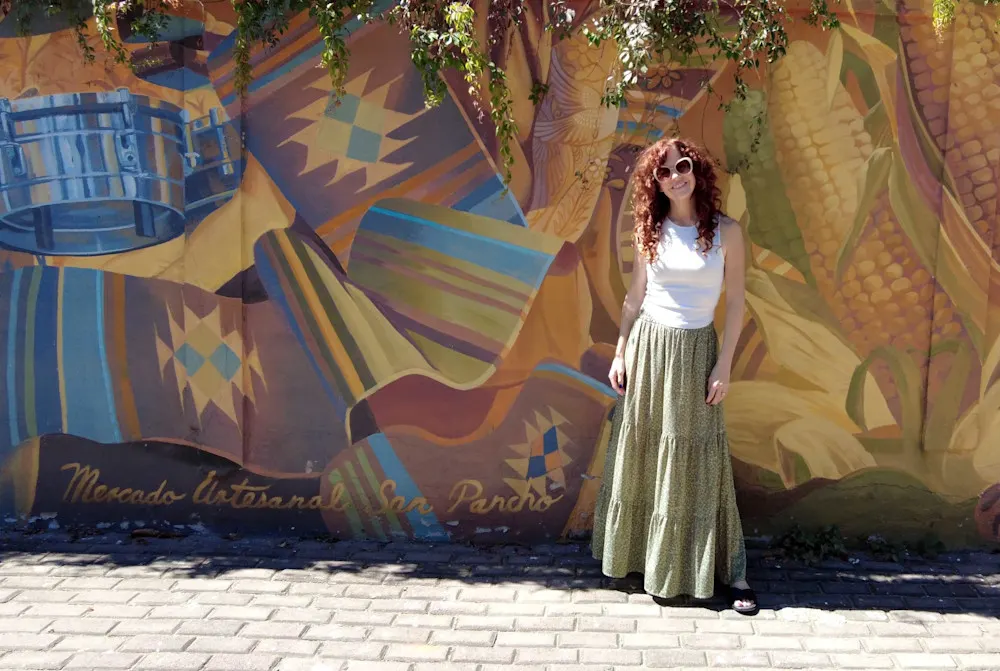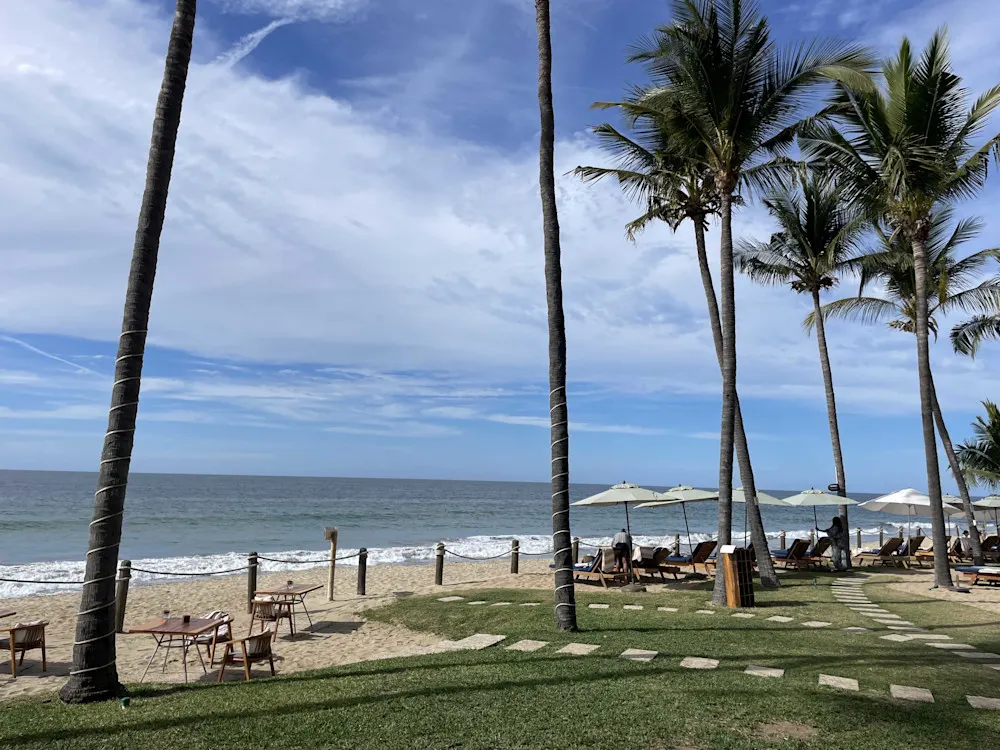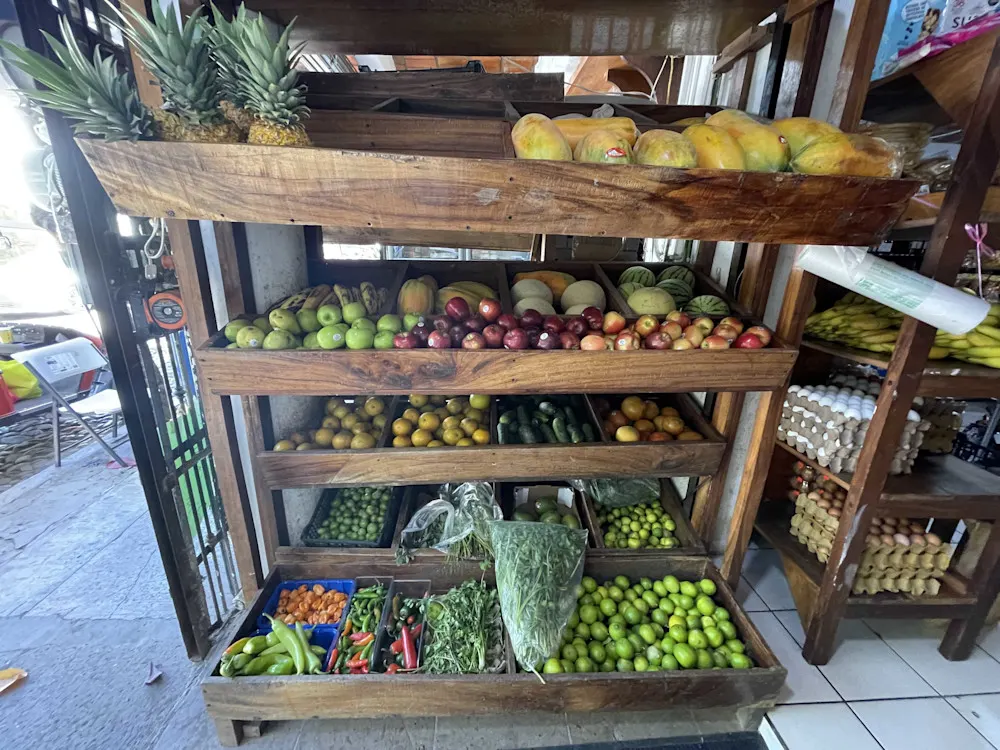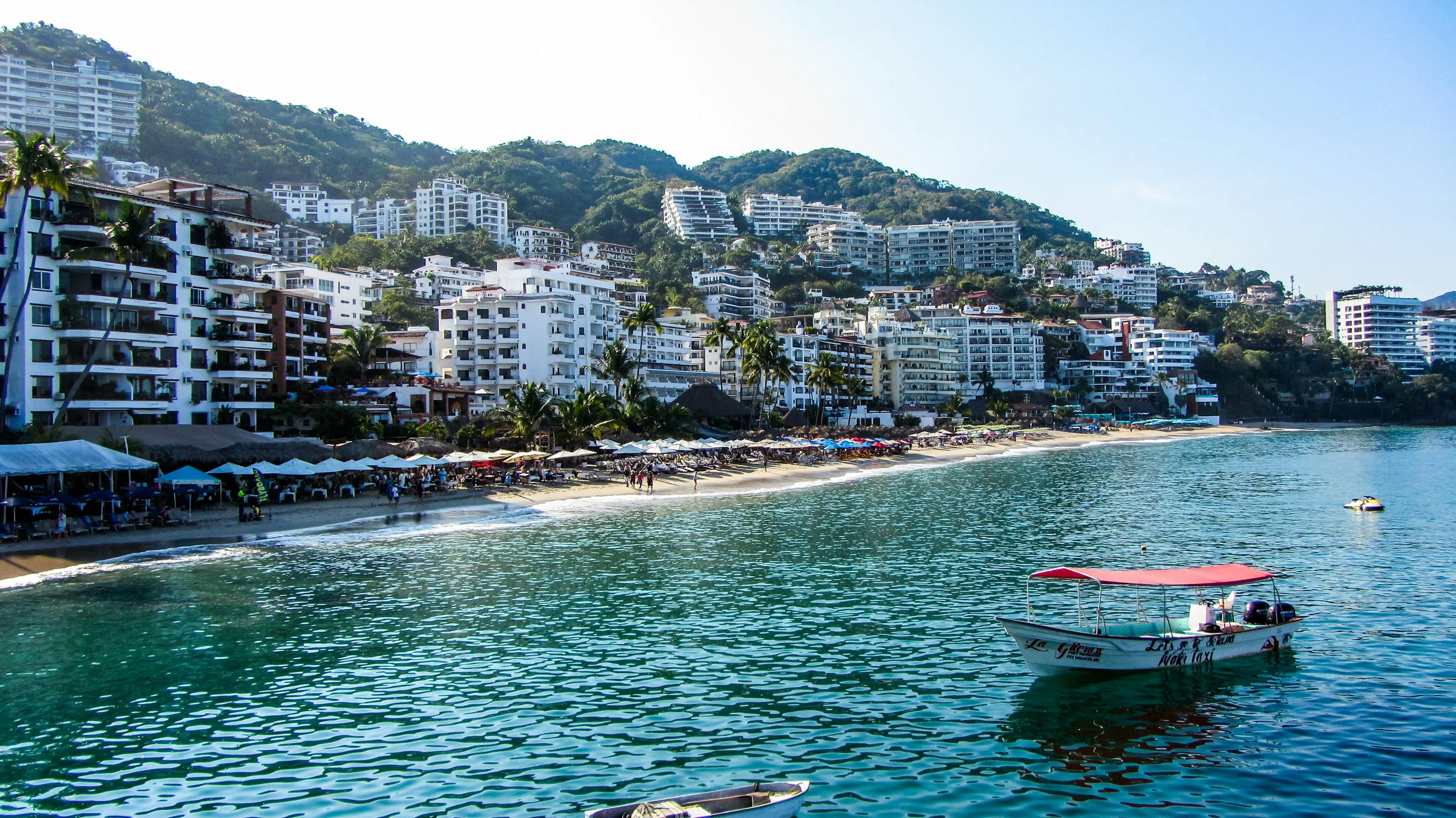San Pancho isn’t just a town—it’s a secret, hidden in plain sight. Tucked away just 25 miles north of Puerto Vallarta International Airport (PVR), it’s a beachside haven so beloved that locals practically swear newcomers to silence. However, keeping quiet about San Pancho is nearly impossible.
Officially, it’s called San Francisco, but no one uses that name. Like a whispered code among those in the know, it’s simply San Pancho. In Mexico, even towns have nicknames. Just as Ignacio becomes Nacho and José turns into Pepe, Francisco morphs into Pancho. And this town embraces it wholeheartedly.
Mark and I spent a few days in San Pancho, uncovering what makes this little town so special. We met expats, spoke with entrepreneurs, and chatted with realtors to find out what life here is really like. And if there’s one thing we learned, it’s that people love to talk about San Pancho—but they don’t want anyone else to know about it.
“Please don’t tell anyone,” we heard again and again. “We want to keep it our little perfect paradise.”
So, what makes people want to keep San Pancho a well-guarded secret? And is it the right place for you?
Sense of Community and Spirituality

If the beach is the heart of the town, its people are the soul. San Pancho has a tight-knit, small-town feel, where neighbors look out for each other, and the community comes together for causes they believe in.
Dan Camacho, co-owner of Picabu, a mezcal-tasting bar, put it this way:
“It has the same small fishing village vibe that Puerto Vallarta had 18 years ago. The community has power. They band together to stop bulldozers kind of power. Save turtles kind of power.”
Expats don’t just live here; they give back.
Many volunteer with organizations like Entreamigos or Circo de los Niños (Kids’ Circus). The former is a community center dedicated to education and leadership opportunities for kids, while the latter—a nonprofit created by Cirque du Soleil co-founder Gilles Ste-Croix—helps children build confidence and develop life skills through circus arts. Both take a grassroots approach to education, equipping kids with valuable skills as they grow.
The town thrives on collaboration, and getting involved is one of the best ways to integrate.
When we asked locals how to meet people, the unanimous answer was: “At the bar, at sunset.” But aside from happy hour, the best ways to connect with the community include volunteering with local organizations, taking Pilates or surfing classes, or simply spending time at the beach.
Expectations vs. Reality

Before arriving, I expected San Pancho to be a quieter, smaller version of Sayulita—its touristy, overcrowded big sister. I thought it would be full of broke surfers and digital nomads.
I was wrong.
San Pancho is small, yes. Slower-paced, definitely. But sleepy? Not at all.
Besides the beach, which serves as the town’s gathering place, there’s a vibrant mix of restaurants, cafés, and bars. Everything closes by midnight, so don’t expect a wild nightlife scene, but the social life is lively without being overwhelming.
Unlike Sayulita, which attracts a younger, party-heavy crowd, San Pancho caters to a more affluent set—people who want an active but balanced lifestyle.
Just a few blocks from the beach is Picabu, and a few blocks from that is Cerveceria Artisanal, a local brewery with live music nightly. Right next door is Serpien-t, a craft cocktail bar featuring a massive, backlit wooden sculpture of a serpent that holds liquor bottles. And that doesn’t even include the handful of beachfront spots.
The Cost of Real Estate

Real estate and restaurant prices reflect the town’s affluence, and it’s clear that well-off surfers and expats have made their mark.
Finding a long-term rental isn’t easy. Everything operates on word of mouth, and much of the real estate is controlled by four original families. If you don’t have connections, securing a place can be tricky. Your best bet? Make friends fast.
Vacation rentals, however, are plentiful, with Airbnb and rental agencies catering to short-term visitors.
Rentals
We met a realtor who added us to a WhatsApp group for rentals. Over the past month, nearly all the messages were from people looking for rentals—hardly anyone offering them. The demand is there. The supply? Not so much.
Which explains why rental prices are relatively high.
While it’s possible to find a basic, bare-bones studio for a couple hundred dollars a month, it might lack hot water or A/C—something to consider during summer, when temperatures hover around 100°F with 80% humidity.
A modern, two-bedroom, two-bathroom home with a garden and parking spot rents for about $1,225 USD ($25,000 MXN) per month.
Buying a Home
If you’re looking to buy, the same applies—prices are high for small-town Mexico.
I wasn’t expecting multi-million dollar homes, but when Mark and I took our little engine-that-could electric golf cart as far up the hills as we could, we were proven wrong.
At the top of a dead-end street, we spotted a man clipping birds of paradise and palm leaves for a bouquet. We struck up a conversation, and within three minutes, he invited us into his home (read: villa) to see the views.
The villa was straight out of Architectural Digest, with 16-foot solid wood doors and a breathtaking view of the town and beach. We were awestruck.
His only request? No pictures of his home, his husband, or their friends vacationing in the infinity pool. And that we do not tell anyone about San Pancho.
Current Real Estate Listings
Studio Corazon Condo – 538 sq. ft., shared pool, street view, full kitchen, one bathroom – $215,000 USD (HOA: $200/month)
Casa Joya – Furnished modern home, three bedrooms, 3.5 bathrooms, private pool and garden, 15-minute walk to the beach – $765,000 USD
Shopping: A Treasure Hunt

Living in San Pancho means embracing a simpler lifestyle. There are no mega-stores, no one-stop shops, and certainly no Costco—though Puerto Vallarta has one about an hour away.
Shopping here feels like an old-time quest.
Need honey? Find Don Derio, who sells it outside his home on Calle Afrika.
Want fish? Ask a friend. Two fish trucks make home deliveries, shouting the fresh catch of the day over their megaphones. But knowing which one is best (hint: the blue truck) requires local insight.
For meat, head to Carnicería Robles.
For produce, Fruitería Emiliano boasts some of the biggest beets and leeks I’ve ever seen.
For staples like pasta and wine, there are three small mercados in town. Indio offers the best selection.
For a full grocery run, you’ll need to head to Bucerías (30-40 minutes away) or Puerto Vallarta, where you’ll find big-box stores like Chedraui, Mega Soriana, La Comer, and Costco.
That said, San Pancho’s tight-knit community means Costco runs are often coordinated via WhatsApp groups. If you’d rather not leave your San Pancho paradise, a service delivers Costco groceries on Wednesdays and Saturdays. They charge a 10% fee for orders over 1,000 pesos and a flat 100-peso fee for smaller orders.
Restaurants: More Gourmet than Street Food

For such a small town, San Pancho has an impressive number of dining options—but they don’t come cheap. While there are a handful of taco stands selling $1 tacos and $3.45 tortas, many restaurants are more upscale.
At Habibi, one of the nicest restaurants in town, a tuna steak costs $33 (680 pesos), while a beetroot, goat cheese, and prawn risotto runs $19 (380 MXN).
Punto Las Olas Mercado Gastronómico offers a variety of international cuisines—Greek, Thai, Italian, and burgers—all under one roof. We ate gyros ($9) and Thai noodles ($13) while listening to a duo of singers croon the night away.
We also found fresh handmade pasta for $10 (210 pesos) at Cocina del Punto, and there’s even an Indian restaurant called Gypsy that we didn’t get to try.
Even though these prices are high for a small town in Mexico, they are still lower than in most small towns in the U.S.—except for Habibi.
Internet: Surprisingly Reliable
Unlike Sayulita, San Pancho isn’t a digital nomad hub. It does have a few very basic coworking cafés—think three tables and a printer with Starlink kind of basic.
Rumors of poor internet turned out to be outdated, and no one we spoke to had any issues.
Good Healthcare for Minor Things
An important aspect of moving anywhere is healthcare access.
San Pancho has plenty of pharmacies, walk-in clinics, and one hospital—aptly named Hospital General San Pancho. It’s small but modern and sufficient for regular doctor’s visits.
However, it’s probably not where you’d go for major surgery. Thankfully, you’re spoiled for choice with high-quality hospitals in nearby Bucerías, Nuevo Vallarta, and Puerto Vallarta.
The Quirks That Make San Pancho Unique

The Street Names – The main road into town is called Tercer Mundo (Third World), a nod to a former president’s vision of creating a self-sustaining model town. All the side streets are named after countries and continents—Afrika, Asia, Chile, Kenia, Cuba, and more.
The Tierra Tropical Polo Club – Yep, San Pancho has a polo club. You can go for sunset or Sunday brunches and watch polo games while wearing hats as big as UFOs. Tierra Tropical, a respected development company, is also opening a golf club and has already built a swanky beach club.
The Roosters – If you’re a light sleeper, beware. Roosters, despite what you’ve been taught—or seen on TV—crow all day and all night, not just in the morning. They won’t be your morning alarm, but they might be your annoyance alarm. And there seem to be as many roosters as there are dogs and cats combined.
The Time Zone Glitch – San Pancho shares a time zone with Puerto Vallarta, but somehow, clocks randomly change. Mark and I were sitting on a couch, and our watches and phones showed different times. No one knows why. Maybe it’s the quartz field the town supposedly sits on. Or is it a glitch in the matrix? A curious little hiccup in time that makes you wonder if you’ve stepped into a slightly different dimension—just for a second. Or maybe it’s just a gentle nudge from the universe that time isn’t as rigid as we think.
The Verdict: Ready Now
San Pancho isn’t for everyone.
If you’re the type of person who loves a small community and enjoys going to the same places where everyone knows your name—a true “Cheers” kind of lifestyle—then San Pancho could be the perfect fit.
If you crave big-city amenities or a fast-paced nightlife, you might struggle here.
But just know—if you move here, you might find yourself keeping San Pancho a secret, too.















